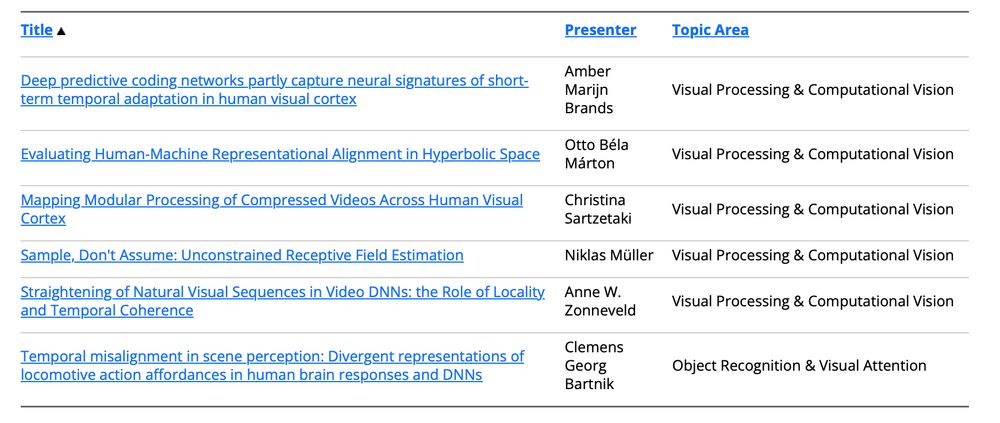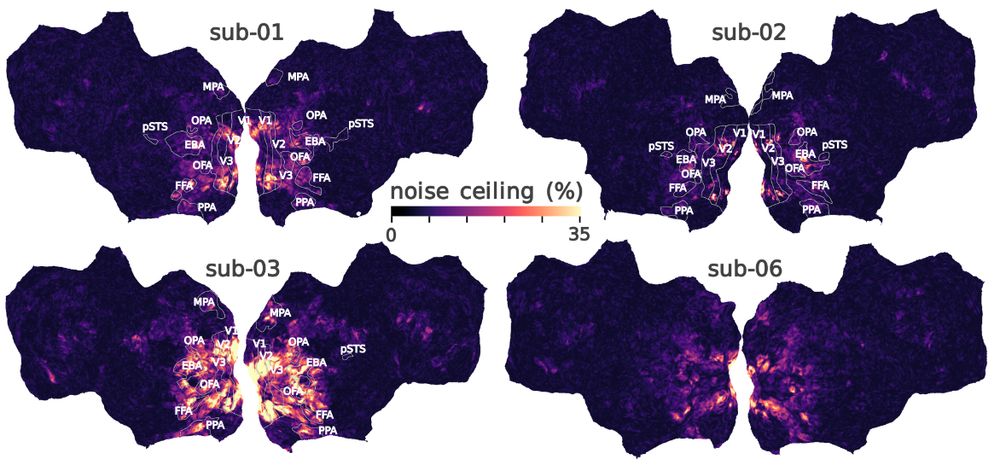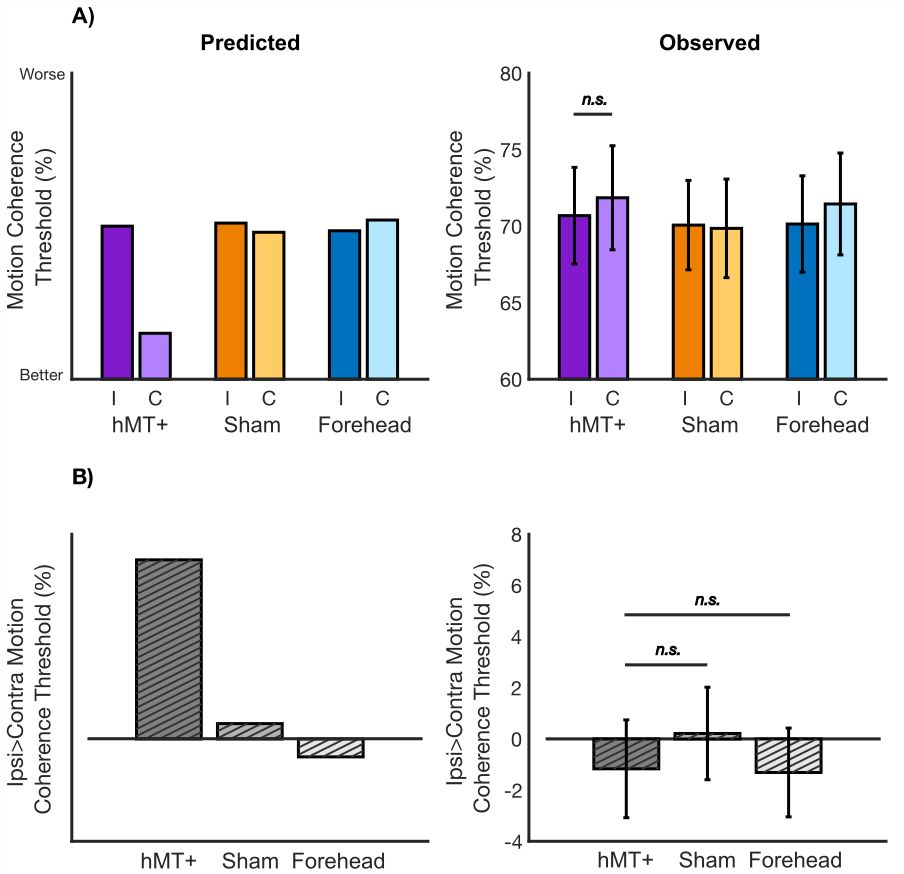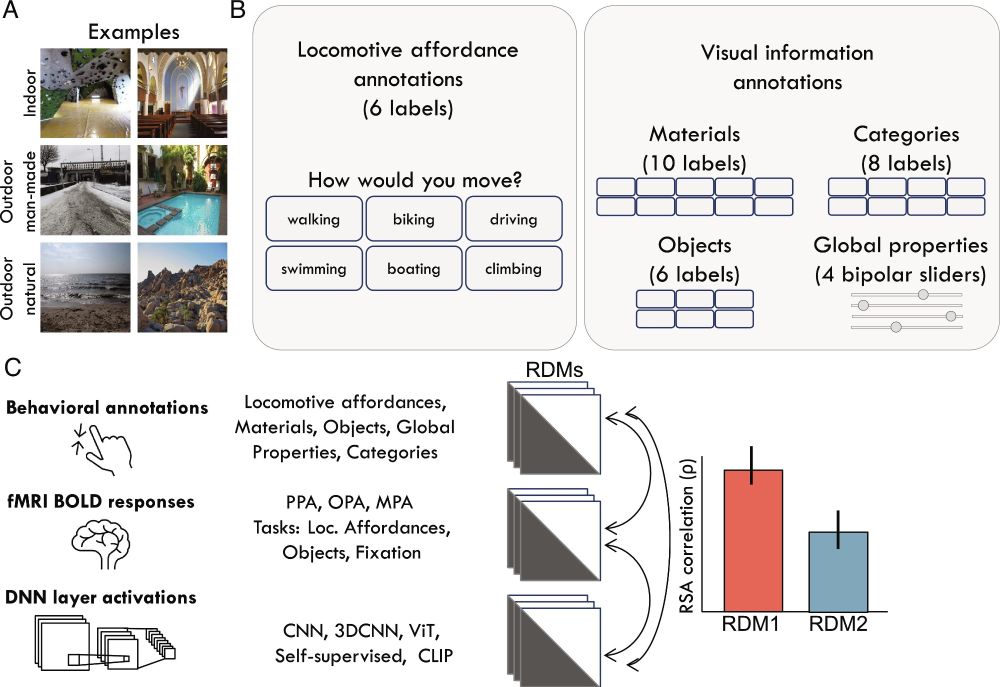Mass-univariate analysis is still the bread-and-butter: intuitive, fast… and chronically overfitted. Add harsh multiple-comparison penalties, and we patch the workflow with statistical band-aids. No wonder the stringency debates never die.
Mass-univariate analysis is still the bread-and-butter: intuitive, fast… and chronically overfitted. Add harsh multiple-comparison penalties, and we patch the workflow with statistical band-aids. No wonder the stringency debates never die.
But, contrary to what you may think, noise ceilings do not provide an absolute index of data quality.
Let's dive into why. 🧵
But, contrary to what you may think, noise ceilings do not provide an absolute index of data quality.
Let's dive into why. 🧵
@marcsinstitute.bsky.social is offering International Visiting Scholarships for PhD students + postdocs.
Spend 1–3 months collaborating, exploring ideas, and building connections.
📅 Apply by 4 Dec
📍 Sydney, Australia
Curious or keen? DM or email me

@marcsinstitute.bsky.social is offering International Visiting Scholarships for PhD students + postdocs.
Spend 1–3 months collaborating, exploring ideas, and building connections.
📅 Apply by 4 Dec
📍 Sydney, Australia
Curious or keen? DM or email me
The position is funded as part of the Excellence Cluster "The Adaptive Mind" at @jlugiessen.bsky.social.
Please apply here until Nov 25:
www.uni-giessen.de/de/ueber-uns...

The position is funded as part of the Excellence Cluster "The Adaptive Mind" at @jlugiessen.bsky.social.
Please apply here until Nov 25:
www.uni-giessen.de/de/ueber-uns...
I’m most excited by “phase III” in the alignment time course, which is best captured by mid-layers of temporally integrating video models! While we do not directly compare with image-EEG (yet - will do so in the #VIDI) I suspect this is unique to video vision 🎥🔥
Building on @sargechris.bsky.social's previous work, we benchmark 100+ image and video models 🤖 on brain representational alignment, this time to EEG data of humans 🧠 watching videos! 🧵⬇️
www.biorxiv.org/content/10.1...

I’m most excited by “phase III” in the alignment time course, which is best captured by mid-layers of temporally integrating video models! While we do not directly compare with image-EEG (yet - will do so in the #VIDI) I suspect this is unique to video vision 🎥🔥
mikexcohen.substack.com/p/why-i-left...

mikexcohen.substack.com/p/why-i-left...
Link in post below 👇

Link in post below 👇
We find a striking dissociation: it’s not shared object recognition. Alignment is driven by sensitivity to texture-like local statistics.
📊 Study: n=57, 624k trials, 5 models doi.org/10.1101/2025...

We find a striking dissociation: it’s not shared object recognition. Alignment is driven by sensitivity to texture-like local statistics.
📊 Study: n=57, 624k trials, 5 models doi.org/10.1101/2025...
So much fun to work with this amazing set of authors :)

So much fun to work with this amazing set of authors :)
@amandakrobinson.bsky.social @jesstaubert.bsky.social
www.nature.com/articles/s44...

We provide evidence that gaze reinstatement & neural reactivation are deeply related phenomena that jointly reflect the experiences constructed during recall. doi.org/10.1038/s414...
🧵1/9

go.nature.com/3Jp9NPG

go.nature.com/3Jp9NPG
Massive effort from @hunterschone.bsky.social who was in the awesome NIH/UCL PhD program with @plasticity-lab.bsky.social
What happens to the brain’s body map when a body-part is removed?
Scanning patients before and up to 5 yrs after arm amputation, we discovered the brain’s body map is strikingly preserved despite amputation
www.nature.com/articles/s41593-025-02037-7
🧵1/18
Massive effort from @hunterschone.bsky.social who was in the awesome NIH/UCL PhD program with @plasticity-lab.bsky.social
After great conversations at #CCN2025 on multi-task studies & generalization in brains & models, I thought I would repost our perspective for those interested in this topic. We need multiple tasks!👉 doi.org/10.1038/s415...

After great conversations at #CCN2025 on multi-task studies & generalization in brains & models, I thought I would repost our perspective for those interested in this topic. We need multiple tasks!👉 doi.org/10.1038/s415...
of @cogcompneuro.bsky.social, #CCN2025 is finally here!
While I'm proud of the entire program we put together, I'd now like to highlight my own lab's contributions, 6 posters total:

of @cogcompneuro.bsky.social, #CCN2025 is finally here!
While I'm proud of the entire program we put together, I'd now like to highlight my own lab's contributions, 6 posters total:

Thanks to @pci-regreports.bsky.social for constructive guidance through the whole process
@ryanruhde.bsky.social Mica Carroll @cibaker.bsky.social
#trns #nibs #NIMH
doi.org/10.1016/j.co...
1/6

Thanks to @pci-regreports.bsky.social for constructive guidance through the whole process
🚨 Our new interdisciplinary study put this question to the test with the Third Thumb (@daniclode.bsky.social), a robotic extra digit you control with your toes!
www.biorxiv.org/content/10.1...
🧵1/10
🚨 Our new interdisciplinary study put this question to the test with the Third Thumb (@daniclode.bsky.social), a robotic extra digit you control with your toes!
www.biorxiv.org/content/10.1...
🧵1/10
www.pnas.org/doi/10.1073/...
Using behavior, fMRI and deep network analyses, we report two key findings. To recapitulate (preprint 🧵lost on other place):

www.pnas.org/doi/10.1073/...
Using behavior, fMRI and deep network analyses, we report two key findings. To recapitulate (preprint 🧵lost on other place):
In a new preprint with @martinhebart.bsky.social & @kathadobs.bsky.social, we show that category-selective areas encode a rich, multidimensional feature space 🌈
www.biorxiv.org/content/10.1...
#neuroskyence
🧵 1/n
In a new preprint with @martinhebart.bsky.social & @kathadobs.bsky.social, we show that category-selective areas encode a rich, multidimensional feature space 🌈
www.biorxiv.org/content/10.1...
#neuroskyence
🧵 1/n

